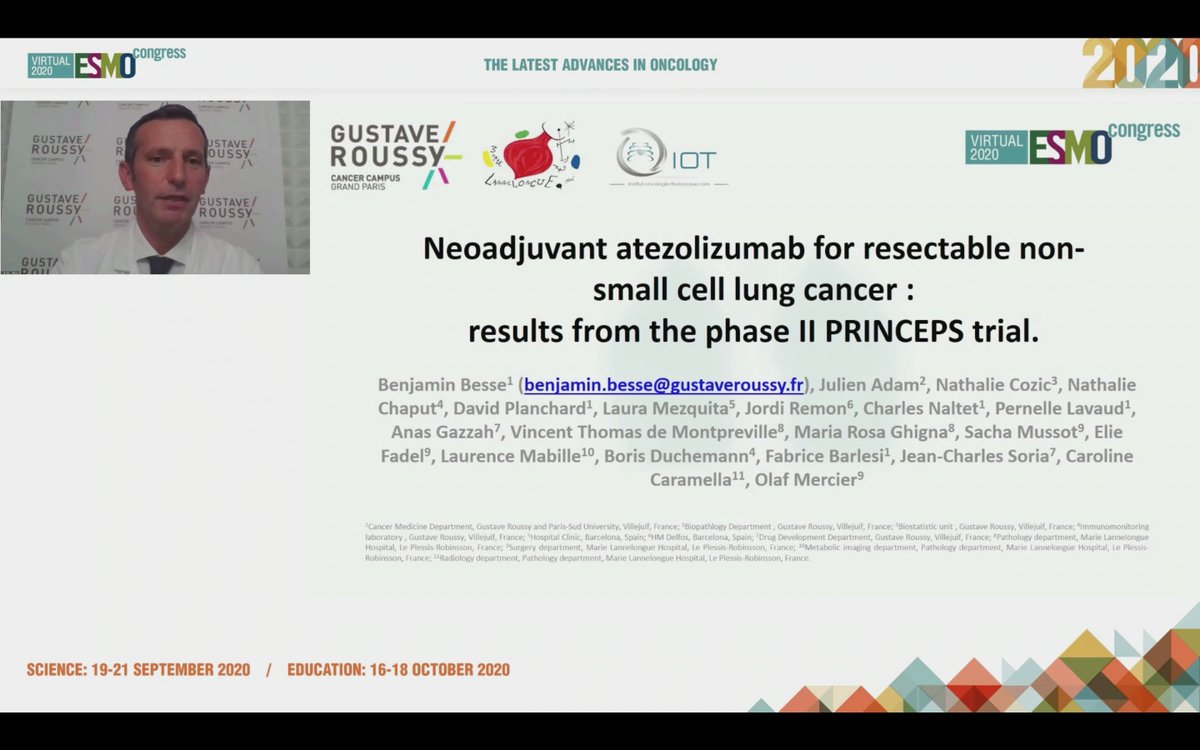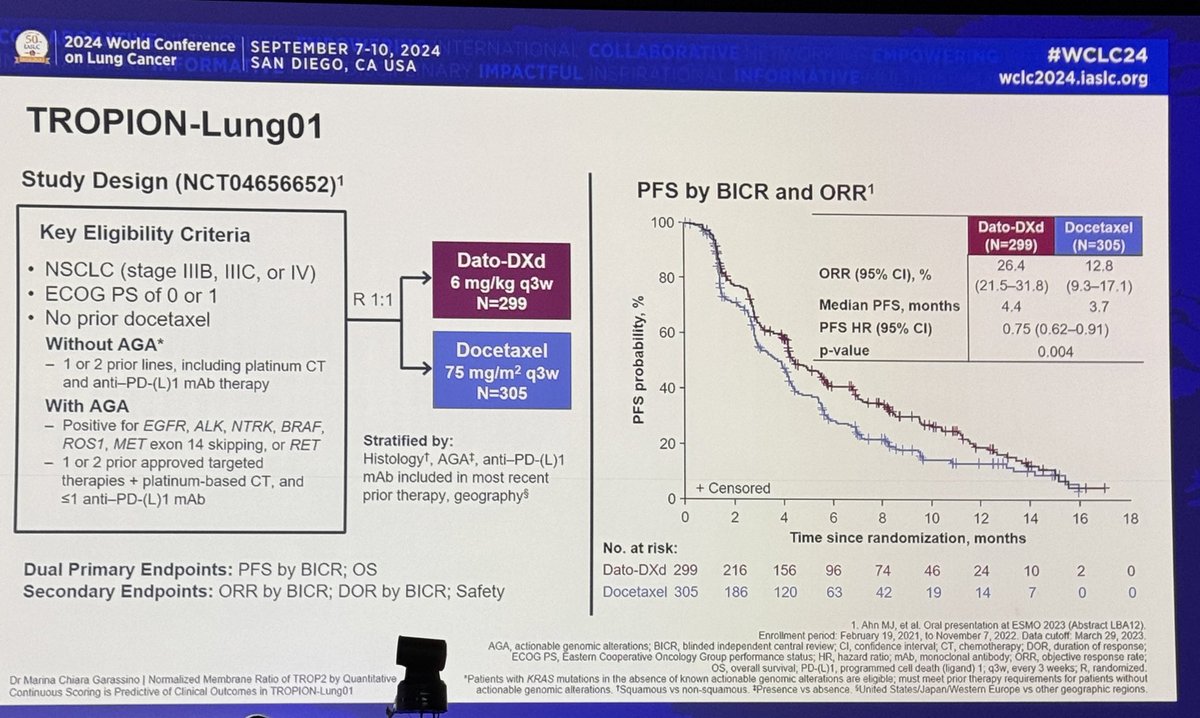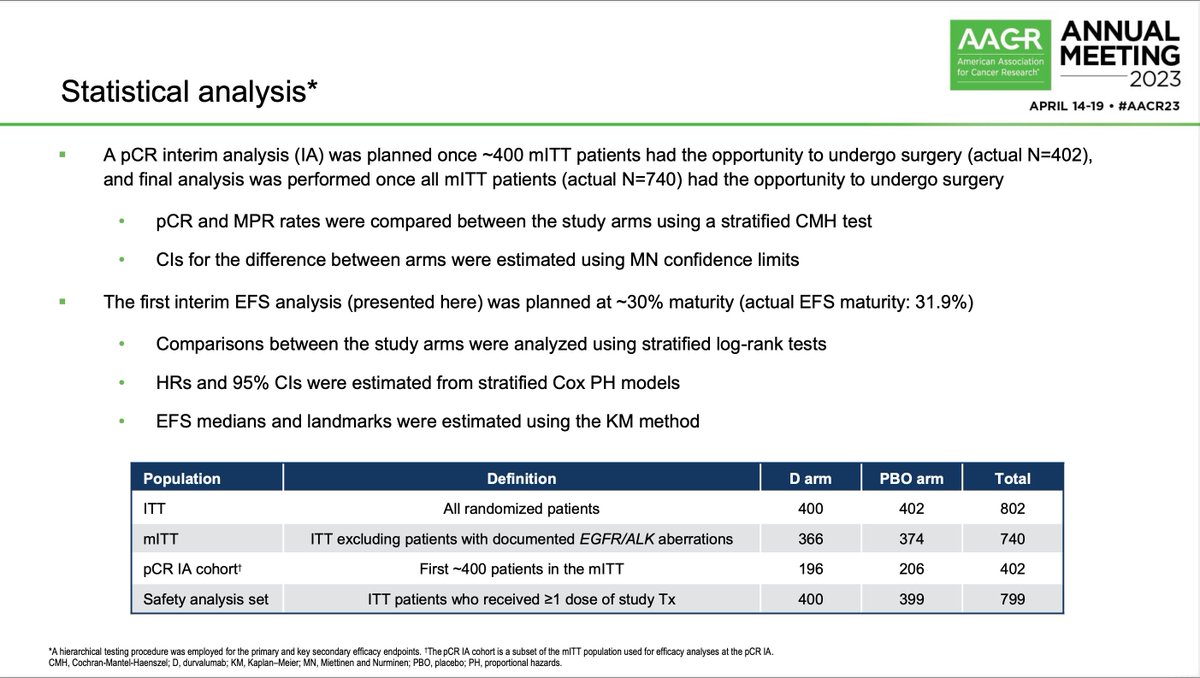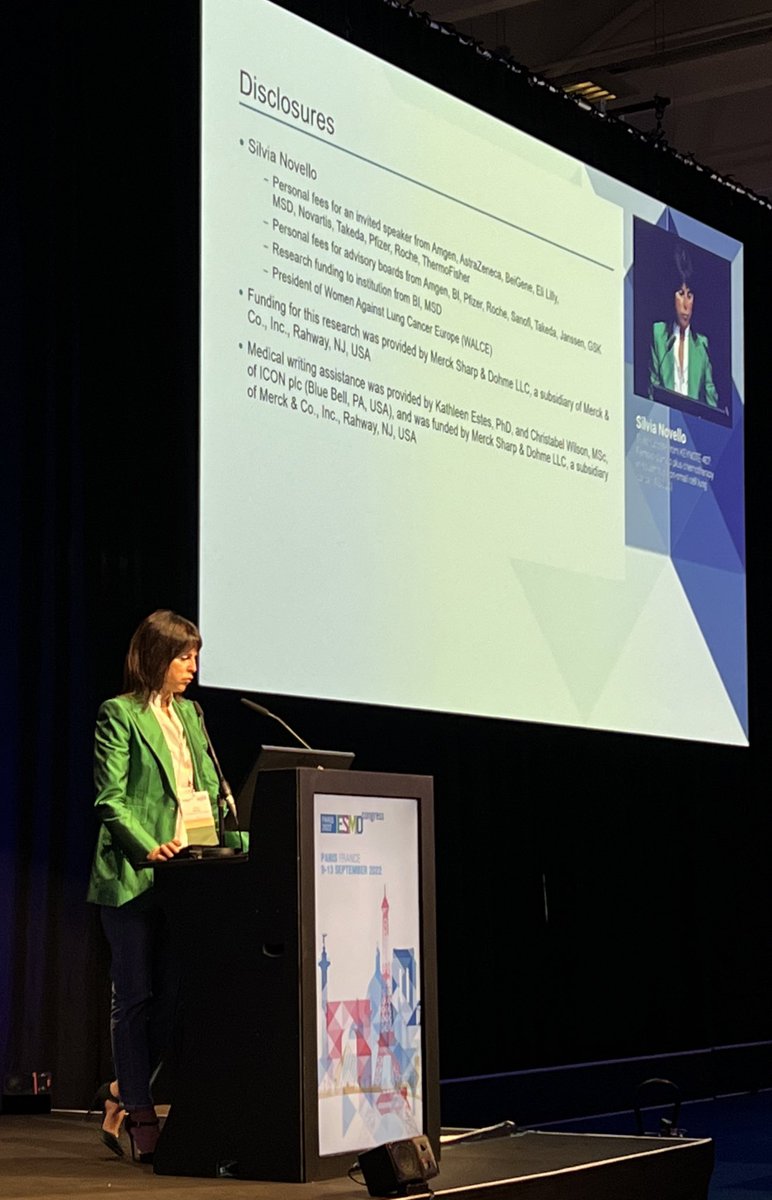#ESMO20 Presentation of the phase II PRINCEPS trial of neoadjuvant atezolizumab monotherapy in resectable NSCLC by @BenjaminBesseMD from @GustaveRoussy #LCSM @OncoAlert @myESMO 

#ESMO20 Building on other studies showing 17-45% rates of major pathologic responses (MPR) but focused on the translational opportunities with these neoadjuvant trials #LCSM @OncoAlert 

#ESMO20 In the PRINCEPS trial, only a single dose of atezolizumab was given 3 weeks before resection. Focused on safety (2m tolerance) with plans for 60 patients. As it became clear from other studies that this was a safe approach, sample size dropped to 30 (+ 30 control). #LCSM 







#ESMO20 All patients went to surgery. Characteristics include genomics and of 30 patients, 3 had #EGFR mutations (will be interested to see the future translational work in this subset). #LCSM 





#ESMO20 Only 2 responses noted but 4 MPR noted - disconnect between radiographic and pathologic responses is consistent with prior reports and important to remember. Metabolic responses more difficult to analyze. #LCSM @OncoAlert 





#ESMO20 Excellent example by @BenjaminBesseMD - LUL lesion still very PET avid with no change in size, yet at resection, achieved major pathologic response (MPR). #LCSM @OncoAlert 

#ESMO20 Design allowed for great translational work, correlating PDL1 with responses, extensive genomic analyses, and immune characterization including #TIGIT co-localization #LCSM @OncoAlert 





#ESMO20 Even with a single dose of atezolizumab, 14% of MPR were noted and this did not correlate with RECIST responses or metabolic variations. This study will yield very interesting translational studies in the near future (including impact of atezolizumab on EGFR TME). #LCSM 

• • •
Missing some Tweet in this thread? You can try to
force a refresh






































